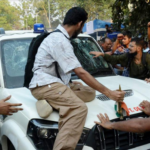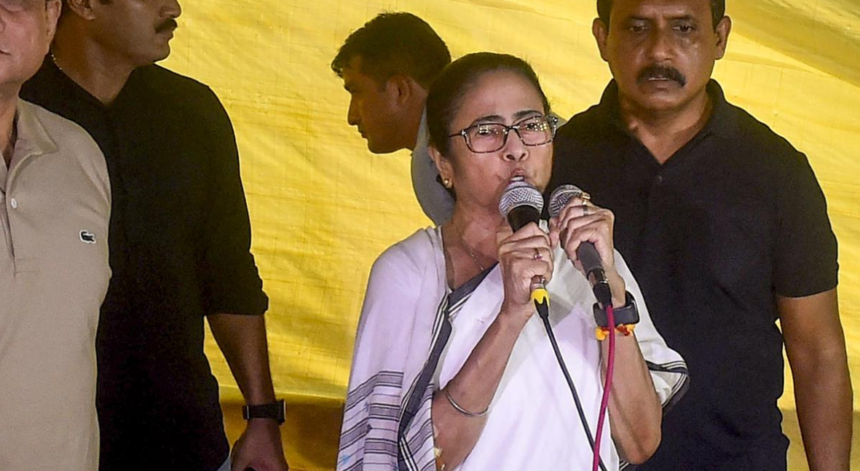Introduction
In recent times, the medical fraternity of West Bengal Mamata, particularly the junior doctors, has been embroiled in protests aimed at highlighting their grievances. The West Bengal Junior Doctors’ Front, an organized body representing the junior doctors of the state, has taken a bold step by seeking the intervention of Chief Minister Mamata Banerjee. Their demands focus on addressing pressing issues within the healthcare system, particularly relating to safety, working conditions, and infrastructure. While the Chief Minister’s visit to the protest site was appreciated, the doctors have been persistent in seeking a face-to-face discussion to resolve their concerns fully.
This article delves into the root causes of the doctors’ protests, the sequence of events leading to their visit to CM Mamata Banerjee’s residence, and the potential implications for the state’s healthcare system and governance.
The Genesis of the Protests
The protests by junior doctors in West Bengal did not arise in isolation. They are a culmination of years of dissatisfaction with the working conditions faced by medical professionals, particularly those at the entry-level in the state’s public healthcare sector. These issues include:
1. Safety Concerns
One of the primary demands of the protesting doctors is the need for better security. Incidents of violence against doctors, especially junior doctors, have been on the rise. In many cases, the violence is sparked by frustration among patients or their relatives, often exacerbated by poor healthcare infrastructure or resource shortages. Junior doctors, who are on the frontlines of patient care, have borne the brunt of this unrest.
In several hospitals across the state, junior doctors have faced verbal abuse, physical assaults, and threats from disgruntled patients or their families. These incidents are demoralizing and create an unsafe work environment, which hampers the ability of doctors to provide effective care.
2. Poor Working Conditions
Another major grievance is the poor working conditions that junior doctors are subjected to. Overcrowded hospitals, inadequate staff, and limited resources have strained the healthcare infrastructure in West Bengal. Junior doctors often work long hours, with minimal breaks, and are expected to manage a large number of patients with insufficient support. This leads to burnout, fatigue, and compromises the quality of care provided.
The protests have called for improvements in working conditions, including the recruitment of more healthcare workers, better management of patient loads, and infrastructure upgrades.
3. Lack of Basic Amenities
The Mamata hospitals where junior doctors work often lack basic amenities such as clean washrooms, proper seating arrangements, and adequate space for resting during long shifts. Despite being at the core of patient care, the living and working conditions provided to junior doctors in many government hospitals have been substandard.
4. Unresolved Grievances
While sporadic protests by doctors in West Bengal have occurred over the years, the administration’s response has often been perceived as inadequate. The issues raised by the medical community have persisted, leading to growing frustration and eventually culminating in the current large-scale protests.
Escalation of Protests
The protests gained significant momentum when a group of junior doctors from several hospitals across the state came together under the banner of the West Bengal Junior Doctors’ Front. United by their shared experiences of unsafe working conditions and inadequate responses from the government, they began organizing peaceful demonstrations.
The protest movement quickly gained attention, with junior doctors boycotting non-emergency services in government hospitals, demanding immediate action. While emergency services were still being provided, the boycott led to a significant strain on healthcare services, drawing public attention to their plight.
1. Widespread Support
The protests gained support not only from within the state but also from doctors’ associations across the country. Medical bodies from other states expressed solidarity with their West Bengal counterparts, highlighting the universal challenges faced by junior doctors in India. The issue of doctor safety, in particular, resonated nationwide, as attacks on healthcare workers have been reported in many regions.
Additionally, senior doctors and medical professionals voiced their support for the movement, emphasizing that the concerns raised were legitimate and required immediate attention from the state government.
2. Government Response
Initially, the West Bengal government responded by appealing to the doctors to call off the protests, emphasizing that patient care was being affected. However, the doctors insisted that their demands, particularly regarding safety and working conditions, needed to be addressed with concrete actions rather than mere assurances.
As the protests continued, Chief Minister Mamata Banerjee visited one of the protest sites, signaling the government’s willingness to engage with the medical community. Her visit was appreciated by the protesting doctors, as it marked an acknowledgment of their concerns at the highest level of the state government. However, the doctors insisted on having a formal discussion with her to address their demands comprehensively.
The Visit to CM Mamata Banerjee’s Residence
Despite the Chief Minister’s Mamata visit to the protest site, the junior doctors remained steadfast in their demand for a formal audience with her. They argued that while her presence at the protest site was a positive step, a detailed discussion was necessary to work out a long-term solution to the challenges they faced.
On September 14, a delegation of junior doctors, representing the West Bengal Junior Doctors’ Front, marched towards Chief Minister Mamata Banerjee’s residence to personally hand over a letter to her, outlining their demands. The letter, addressed to the Chief Secretary of the state, welcomed the Chief Minister’s visit but reiterated the need for an in-depth discussion.
1. Demands in the Letter
The letter addressed to the Chief Secretary laid out a clear list of demands, which included:
- Improved Security Measures: The doctors demanded the deployment of police personnel at hospitals to ensure their safety, as well as the installation of CCTV cameras and other security infrastructure.
- Better Working Conditions: They called for an immediate review of the working conditions in government hospitals, including measures to reduce the workload on junior doctors and improvements in hospital infrastructure.
- Prompt Action on Violent Incidents: The doctors insisted that strict legal action be taken against those responsible for attacking healthcare workers.
- Regular Dialogue with the Government: The Junior Doctors’ Front requested regular meetings with the state government to ensure that their concerns are heard and addressed promptly.
2. Reaching the CM’s Residence
The peaceful march by the doctors toward the Chief Minister’s Mamata residence was symbolic of their commitment to achieving a resolution through dialogue. The doctors arrived at her residence in a disciplined and organized manner, emphasizing that their actions were not aimed at disrupting governance but rather at seeking the intervention of the highest authority in the state.
However, security measures were tightened around the CM’s Mamata residence, and the doctors were met with a contingent of police officers. After some negotiation, representatives of the Junior Doctors’ Front were allowed to deliver their letter, although they were not granted an immediate audience with the Chief Minister.
Potential Outcomes and Impact
The ongoing protests by junior doctors in West Bengal have sparked a debate about the state of healthcare in the region and the responsibilities of the government in ensuring the welfare of its medical staff. The outcome of these protests could have significant implications, not only for the doctors involved but for the broader healthcare system in the state.
1. Government Action
In the wake of the protests, the state government may be compelled to take concrete action to address the doctors’ demands. This could involve increased security measures at hospitals, infrastructure upgrades, and the recruitment of additional medical staff to ease the burden on junior doctors.
Additionally, the protests may lead to more regular communication between the government and healthcare workers, ensuring that grievances are addressed before they escalate into larger movements.
2. Public Perception
The protests have brought to light the challenges faced by doctors working in government hospitals. Public perception, particularly among patients and their families, could shift as they gain a better understanding of the difficulties faced by healthcare workers. This could lead to a reduction in instances of violence and a more collaborative approach to resolving issues within the healthcare system.
3. Strengthening the Medical Community
The protests have also strengthened the unity within the medical community, both in West Bengal and across India. The solidarity shown by doctors’ associations nationwide could pave the way for broader discussions on improving working conditions for junior doctors across the country.
Conclusion
The protests by junior doctors in West Bengal, culminating in their visit to Chief Minister Mamata Banerjee’s residence, are a reflection of deep-rooted issues within the state’s healthcare system. While the Chief Minister’s initial visit to the protest site was a positive step, the doctors’ demand for a formal audience highlights the need for comprehensive dialogue and concrete action.
As the situation continues to evolve, the government’s response will be critical in determining the future of the protests and the broader healthcare landscape Mamata in West Bengal. For the junior doctors, their peaceful march represents a commitment to achieving justice and reforms, ensuring that the medical profession in the state can thrive in a safe, supportive, and well-equipped environment. ALSO READ:- Tamil Nadu Chief Minister M.K. Stalin Announces Cabinet Reshuffle: Implications and Political Dynamics 2024





